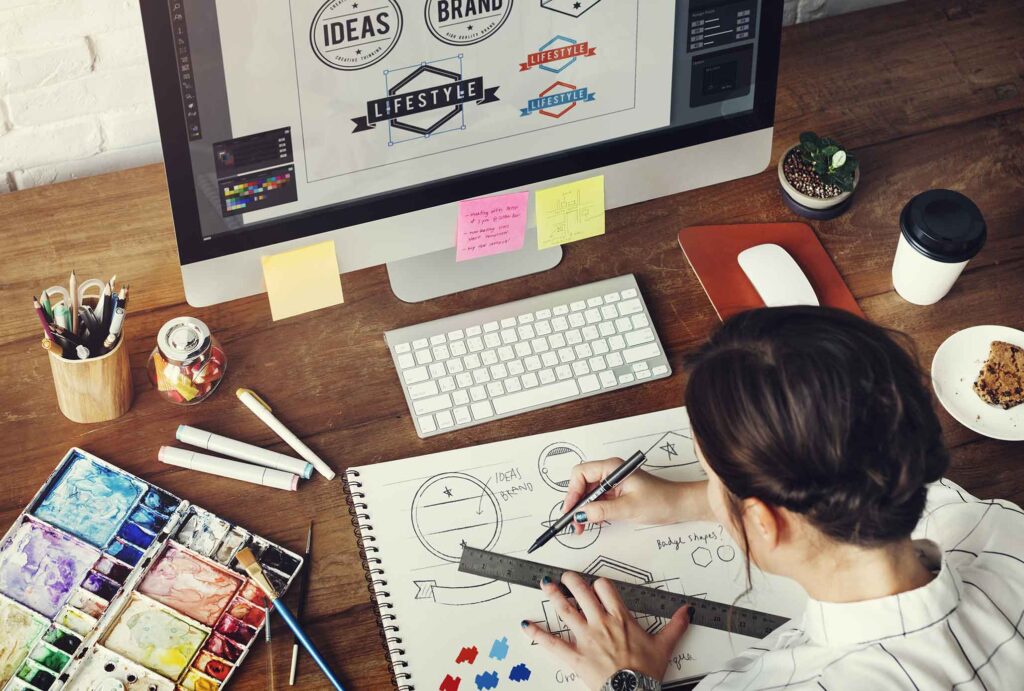Introduction
In our visually-driven digital world, graphic design has become the universal language of communication. From the logos we recognize instantly to the apps we navigate effortlessly, graphic design shapes how we perceive and interact with information every day. More than just making things look attractive, professional graphic design solves problems, communicates ideas, and creates meaningful experiences that resonate with audiences.
This comprehensive guide explores:
✔ Key benefits of professional graphic design
✔ Major types of graphic design specialties
✔ Essential design technologies and tools
✔ Emerging trends shaping the industry
Whether you’re a business owner looking to strengthen your brand, a marketer seeking more engaging content, or an aspiring designer building your skillset, this guide will provide valuable insights into the powerful world of visual communication.
Benefits of Professional Graphic Design
1. Stronger Brand Identity and Recognition
Professional design creates visual consistency across all touchpoints, making your brand:
- 80% more memorable to consumers
- Immediately identifiable in crowded markets
- Perceived as more trustworthy and established
2. Improved Communication Effectiveness
Visual content:
- Processes 60,000x faster than text
- Increases information retention by 65%
- Makes complex ideas instantly understandable
3. Enhanced User Experience
Thoughtful design:
- Reduces bounce rates by 35-50%
- Increases conversion rates by 20-30%
- Guides users intuitively through interfaces
4. Competitive Market Differentiation
Custom design helps businesses:
- Stand out from template-using competitors
- Command 20-30% higher price points
- Establish unique market positioning
5. Increased Engagement and Shareability
Well-designed visuals generate:
- 650% higher engagement than text-only content
- 3x more social media shares
- 55% more time spent with your content
6. Cost-Effective Marketing Asset
Quality design:
- Has longer shelf life than text content
- Works across multiple platforms
- Provides better ROI than most ad spend
7. Emotional Connection Building
Strategic use of:
- Color increases brand recognition by 80%
- Typography influences perception
- Imagery triggers desired emotional responses
8. Professional Credibility Boost
Businesses with professional design:
- Are perceived as 75% more credible
- Attract higher-quality clients
- Command greater industry authority
9. Cross-Cultural Communication
Visual language:
- Overcomes language barriers
- Appeals to global audiences
- Maintains consistency across markets
10. Future-Proof Business Growth
A strong visual foundation:
- Scales seamlessly with business expansion
- Adapts to new platforms and mediums
- Maintains relevance through trends
Major Types of Graphic Design
1. Brand Identity Design
- Logo design
- Color palettes
- Typography systems
- Brand style guides
- Visual language development
Key Tools: Adobe Illustrator, InDesign, Brandfolder
2. Marketing & Advertising Design
- Print/digital ads
- Social media graphics
- Email templates
- Billboard designs
- Promotional materials
Key Tools: Photoshop, Canva, Figma
3. User Interface (UI) Design
- App interfaces
- Website layouts
- Navigation systems
- Interactive elements
- Prototyping
Key Tools: Figma, Sketch, Adobe XD
4. Publication Design
- Magazine layouts
- Book covers/interiors
- Newsletters
- Annual reports
- White papers
Key Tools: InDesign, QuarkXPress, Affinity Publisher
5. Packaging Design
- Product packaging
- Labels
- Shopping experiences
- Unboxing moments
- Shelf impact
Key Tools: Illustrator, Dimension, Blender
6. Motion Graphics
- Animated logos
- Explainer videos
- UI animations
- Social media stories
- Broadcast graphics
Key Tools: After Effects, Cinema 4D, Premiere Pro
7. Environmental Design
- Signage systems
- Trade show displays
- Retail interiors
- Wayfinding
- Experiential branding
Key Tools: AutoCAD, SketchUp, Revit
8. Illustration
- Custom artwork
- Digital paintings
- Infographics
- Character design
- Editorial illustrations
Key Tools: Procreate, Photoshop, Corel Painter
Essential Graphic Design Technologies
Design Software
- Adobe Creative Cloud (Industry standard suite)
- Photoshop (raster editing)
- Illustrator (vector graphics)
- InDesign (layout design)
- After Effects (motion graphics)
- Figma (Collaborative interface design)
- Canva (Beginner-friendly template platform)
- Procreate (Professional digital illustration)
Prototyping & UX Tools
- Adobe XD (UI/UX prototyping)
- Sketch (Mac-based interface design)
- InVision Studio (Interactive prototypes)
3D & Motion Design
- Blender (Open-source 3D creation)
- Cinema 4D (Professional 3D animation)
- Substance 3D (Material creation)
Color Management
- Pantone Connect (Industry color standards)
- Adobe Color (Palette creation)
- Coolors (Quick color scheme generation)
Typography Tools
- Adobe Fonts (Extensive type library)
- Google Fonts (Web-friendly typography)
- FontBase (Font management)
Emerging Technologies
- AI Design Assistants (Midjourney, DALL·E 2)
- AR/VR Design Tools (Adobe Aero, Unity)
- Collaborative Cloud Platforms (Figma, Miro)
Conclusion
Graphic design has evolved far beyond simple decoration—it’s now a fundamental business strategy that directly impacts perception, engagement, and revenue. The various design specialties each serve unique communication needs, from establishing brand identity to creating seamless user experiences.
As design technologies continue advancing, professionals now have unprecedented creative capabilities at their fingertips. However, the true power lies not in the tools themselves, but in how designers use them to solve problems, tell stories, and create meaningful connections.
In an increasingly visual world, investing in professional graphic design isn’t just advisable—it’s essential for any business or individual looking to communicate effectively and stand out in today’s competitive landscape. Whether you’re building a brand from scratch or refreshing an existing identity, understanding these design fundamentals will help you make informed decisions about your visual communication strategy.



